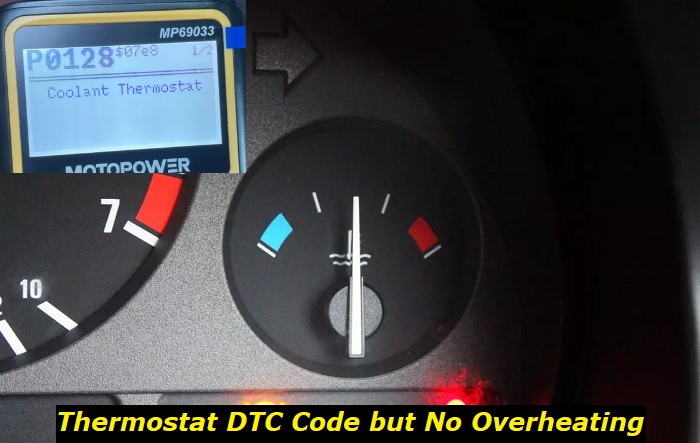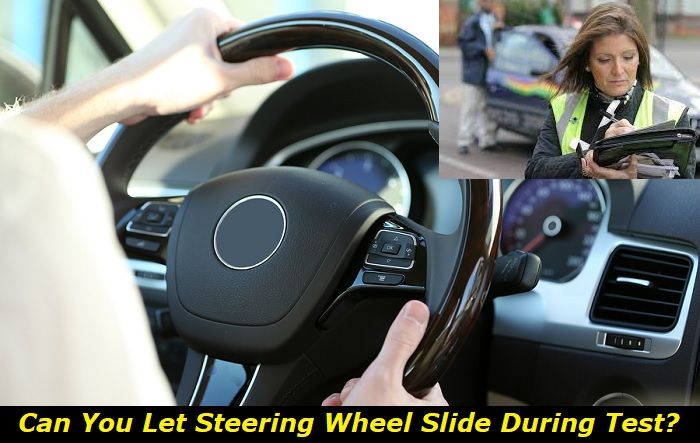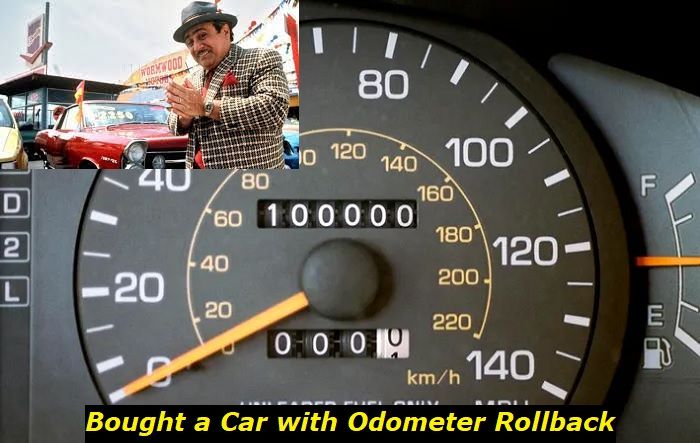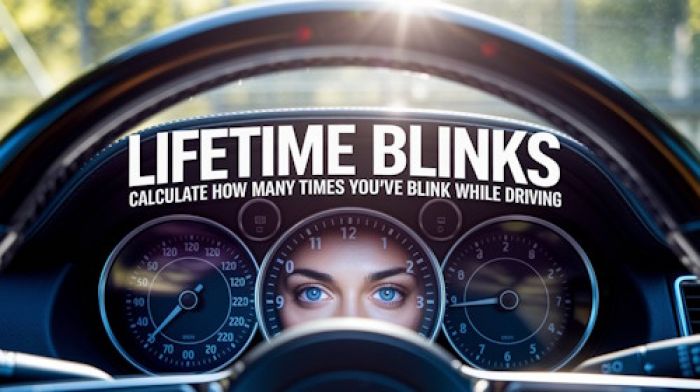If you're getting a thermostat code and your engine is overheating, then you're most likely receiving the P0128 trouble code. This is the most common thermostat trouble code. It's common to think that thermostat problems will result in the engine overheating. While this is usually true, sometimes thermostat issues can also result in the engine running too cold. Why are you getting a thermostat code without overheating?
P0128 code highlights
- Level of urgency:High
- Possible culprits:thermostat problems, issues with engine coolant temp sensors
- Price for repair:$100 - $450
- If neglected:Engine won't work efficiently
- DIY repairs:Possible but complicated
- Can you drive?Carefully

What is P0128?
P0128 is a generic trouble code that can occur in most vehicles. Receiving this code means that your car's powertrain has detected an unusual temperature reading from the engine.
In this case, your engine is taking too long to reach the required temperature. Your engine has an optimal temperature range that it needs to reach to operate most effectively. If your engine takes too long to reach this temperature, you will get the P0128 code.
What Effects Does P0128 Have?
When dealing with this problem, your car could experience several different symptoms. The first thing that will happen is the check engine light will come on, and your car will store the trouble code P0128.
The most notable symptom is that your car will take too long to reach the optimal running temperature. This means that when you start your car, it will run cold for a while. This is especially likely to happen on colder days.
Another problem you might notice is that the car's air conditioning might not reach the correct temperature. The heating system uses the engine's coolant to warm the air. If the coolant isn't allowed to absorb enough heat, then the car's heater might not generate enough heat.
When the engine does not reach the optimal running temperature, the fuel in the combustion chamber might undergo incomplete combustion. This is because the fuel is not reaching the correct temperature for combustion in the cylinders. When this happens, there is an increase in emissions from unburnt fuel in the exhaust. There will also be a reduction in the power produced by the engine.
Another effect of this problem is that the engine oil in the car will not warm up on time. Cold engine oil does not flow through the engine easily. This will result in low oil pressure, and oil starvation in some parts of the engine. The result of this is premature wear on some of the engine parts.
What Causes P0128?
When you receive a thermostat code, and your engine is not overheating, you might wonder what exactly is wrong with it. It's easy to believe that a problem with the thermostat will result in engine overheating, but this is not always the case.
The thermostat prevents the engine from becoming too hot, but it also prevents the engine from becoming too cold. If something goes wrong with the thermostat, or the thermostat's ability to detect the engine temperature, then the engine will not be able to regulate its temperature effectively, causing the check engine light to go on, and the P0128 error code to be stored.
There are two major causes of the P0128 problem.
1) Faulty Thermostat
The most common cause of this problem is a faulty thermostat. In most cases, the engine temperature is no longer at a normal level because the thermostat has been stuck in one position. In the case of an engine that isn't overheating, the thermostat is most likely stuck in the open position.
The thermostat is a flap that acts as a gate between the engine and the radiator. It manages the flow of coolants between these two parts to control the engine temperature. Its movement is in response to the temperature of the coolant in the cooling system.
The thermostat operates by opening up to allow coolant to flow between the engine and the radiator. This allows the coolant and engine to cool down when the engine is overheating.
The thermostat closes to prevent coolant from moving between the engine and radiator, allowing the engine to build up heat.
2) Faulty Engine Coolant Temperature Sensor
Your car's computer uses temperature readings from the engine coolant temperature sensor to determine the running temperature of your engine. The thermostat uses the readings from the sensor to figure out whether it needs to open or close. If something goes wrong with this sensor, the car's engine control module will receive inaccurate temperature readings, which can cause the thermostat to stay open when it should be closed.
When the engine coolant temperature sensor fails, it's either a result of the sensor itself going bad or a result of bad wiring to the sensor, usually because of a loose or damaged wiring harness.
3) Air Bubbles in the Coolant
Another possible cause of this problem is the presence of air bubbles in the coolant. Air carries heat less effectively than coolant. This causes issues with the coolant temperature sensor detecting the temperature of the coolant.
Air bubbles in the coolant can result in temperature regulation problems when the coolant temperature sensor reads the temperature of the relatively cooler air bubbles rather than the hot fluid.
Can I Drive My Car with P0128?
You can continue to drive your car with P0128. This code will illuminate your check engine light, but your car will continue to run normally. However, you might have some problems with how your car runs. For example, your temperature gauge Might not reach the proper level. Also, you will notice some issues with your car's performance. It might be sluggish, or it might not have optimal power output. You may also notice an increase in the emission levels from your car.
Although your car will continue to drive in this state, it is not recommended that you leave this problem unattended for too long. When your engine doesn't reach the optimal temperature, your engine oil might be too cold. Cold engine oil won't flow through the engine efficiently. This can cause wear on the engine as you continue to drive with poor oil circulation.
How Can I Fix P0128?
Fixing the P0128 problem is relatively straightforward. In most situations, the problem is with the thermostat. It usually means that it is faulty and needs to be replaced. However, some other problems could cause P0128.
Here are the different methods of resolving the P0128 problem in your car.
1) Replace the Thermostat
If the thermostat is faulty, it will need to be replaced. You can test whether the thermostat is functioning by finding the radiator hose attached to the thermostat housing.
- Locate the radiator hose attached to the thermostat housing.
- Make sure the engine is cold and then start the engine.
- Use your hand to feel the temperature of the radiator house.
- If the radiator hose suddenly gets hot after 3-5 minutes, then the thermostat is functioning properly.
- If the radiator hose increases in temperature gradually, rather than suddenly getting hot after a few minutes, then the thermostat is faulty and stuck in the open position.
If you've performed the test and found your thermostat to be faulty, you will need to replace it.
2) Flush the Coolant
You can check for air in your coolant by draining some of the coolant. If it comes out with visible bubbles or jerky motion, then you have air bubbles in your coolant line.
You can get rid of the bubbles by draining your coolant and replacing it with fresh coolant.
3) Replace the Engine Coolant Temperature Sensor
If the thermostat is functioning, then you need to check the engine coolant temperature sensor. A faulty sensor will cause problems with temperature detection and regulation.
If the sensor is corroded or damaged, then you will need to replace it. A replacement sensor is not too expensive and can be replaced easily if you have the appropriate experience. If you're not comfortable replacing it yourself, you can have it replaced by a mechanic.
If the sensor is not corroded, you should make sure that the electrical connector is properly connected. Check for signs of corrosion or burnt wiring. And damaged wiring will need to be replaced by an automotive electrician.
Conclusion
If you have a check engine light and you scan your car, receiving a thermostat code when the engine isn't overheating implies that you have a problem with the thermostat or coolant temperature sensor.
While you can continue to drive your car for some time in this condition, it is recommended that you have the issue resolved as soon as possible. You can deal with this issue by checking if the thermostat is faulty and replacing it. you might also need to replace the coolant temperature sensor if it is corroded. Finally, you can check the coolant fluid for air bubbles, and replace it if necessary.
About the authors
The CarAraC research team is composed of seasoned auto mechanics and automotive industry professionals, including individuals with advanced degrees and certifications in their field. Our team members boast prestigious credentials, reflecting their extensive knowledge and skills. These qualifications include: IMI: Institute of the Motor Industry, ASE-Certified Master Automobile Technicians; Coventry University, Graduate of MA in Automotive Journalism; Politecnico di Torino, Italy, MS Automotive Engineering; Ss. Cyril and Methodius University in Skopje, Mechanical University in Skopje; TOC Automotive College; DHA Suffa University, Department of Mechanical Engineering






Add comment